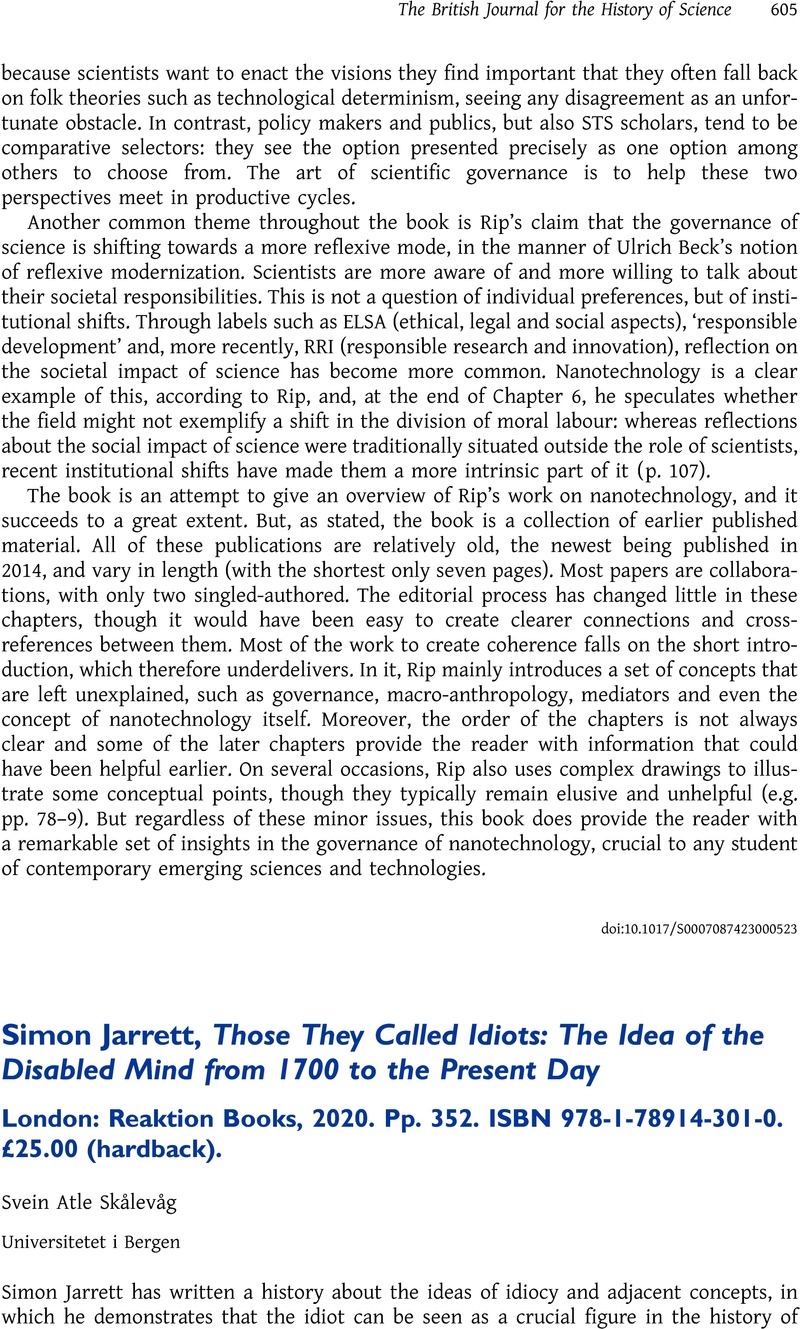No CrossRef data available.
Article contents
Simon Jarrett, Those They Called Idiots: The Idea of the Disabled Mind from 1700 to the Present Day London: Reaktion Books, 2020. Pp. 352. ISBN 978-1-78914-301-0. £25.00 (hardback).
Review products
Simon Jarrett, Those They Called Idiots: The Idea of the Disabled Mind from 1700 to the Present Day London: Reaktion Books, 2020. Pp. 352. ISBN 978-1-78914-301-0. £25.00 (hardback).
Published online by Cambridge University Press: 31 October 2023
Abstract
An abstract is not available for this content so a preview has been provided. Please use the Get access link above for information on how to access this content.

Information
- Type
- Book Review
- Information
- The British Journal for the History of Science , Volume 56 , Special Issue 4: The Art of Gathering: Histories of International Scientific Conferences , December 2023 , pp. 605 - 607
- Copyright
- Copyright © The Author(s), 2023. Published by Cambridge University Press on behalf of British Society for the History of Science


